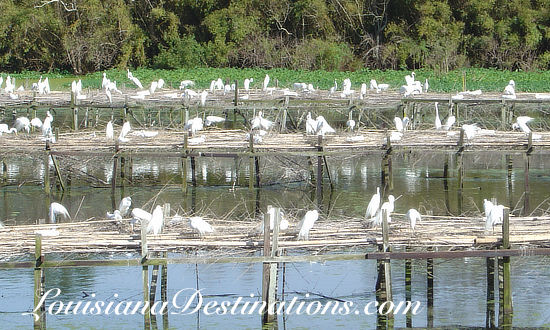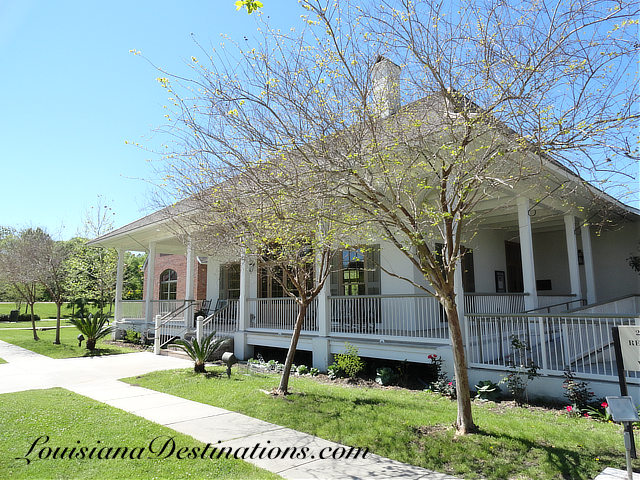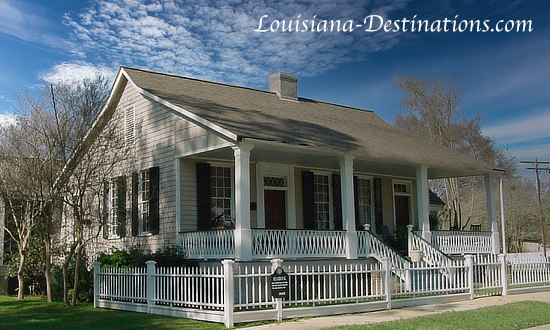
Tour Guide for Small Towns in South Louisiana
Tourists love to visit New Orleans, one of the most popular destinations in the United States. But after you've visited St. Louis Cathedral, the National World War II Museum, toured the French Quarter, rode the streetcars and dined in fine restaurants, you might be ready to get out of the big city!
South Louisiana offers a number of small towns with interesting attractions. Included on this page is one road trip that covers several towns and communities over a 400 mile route. Pace yourself for as long as you care to! You will find hotels and B&Bs along the route, espcially in places like Morgan City, New Iberia, Lafayette, St. Francisville, and Baton Rouge.
You can start in New Orleans, or also drive/fly to Lafayette or Baton Rouge to begin, or end, your trip. On this road trip we will start, and end, in New Orleans ... Let's tour our Top 10 Small South Louisiana Towns Outside of New Orleans!
Here is the route ... click to open in Google Maps or access the Interactive Map below
Starting the Road Trip in New Orleans
Heading out of New Orleans on U.S. Highway 90, we journey through Raceland, Morgan City, Franklin and Jeanerette. And then a quick right turn on Highway 83 into New Iberia ...
New Iberia ... Along Bayou Teche
The City of New Iberia is located on U.S. Highway 90 between New Orleans and Lafayette on the banks of the historic Bayou Teche. Many lovely, historic homes are located along Bayou Teche, and throughout the city.
It is the parish seat of Iberia Parish, and was founded in 1779 and incorporated in 1839.
New Iberia is in the heart of Acadiana, and home to the Louisiana Sugar Cane Festival each September.
Avery Island, Jungle Gardens, and Tabasco Sauce
|
Nearby Avery Island is home of the world-famous Tabasco Sauce and the oldest salt mine in North America, and Jungle Gardens. The island was named after the Avery family, who settled there in the 1830s. But even the American Indians in the area knew about the massive underground salt dome.
Avery Island is very near the Gulf of Mexico, only three miles inland from Vermilion Bay. Avery Island remains a natural, sub-tropical paradise, home to massive like oaks, azaleas, camellias, and exotic plants from around the world.
In 1868, Edward McIlhenny founded McIlhenny Company and began manufacturing Tabasco brand pepper sauce and shortly aftwards received patent for his sauce processing formula. Tabasco sauce today is made from the same family formula, using tabasco peppers, vinegar, and salt, and aged in white oak barrels for three years. It has a hot, spicy flavor, and is popular across the USA and the world.
Thousands of birds make their home on Avery Island, during the year and the winter months as well. Visitors, eco-tourists, and bird watchers come from far and wide to see the bird rookeries, and alligators in the ponds and lagoons.
Tours of the Tabasco plant on Avery Island are popular and fun!
Conrad Rice Mill
New Iberia's Conrad Rice Mill is the oldest rice mill in America and is also one of the leading tourist attractions in the Bayou Teche area. At this National Register of Historic Places site, visitors can watch an introductory video about the history of rice farming in Louisiana, tour the mill itself and shop at the KONRIKO Company Store for some truly unique local souvenirs.
For more information, visit the website of the Conrad Rice Mill.
Bayou Teche Museum
The Bayou Teche Museum features many interactive exhibits that showcase the spicy blend of cultures, artists, industries and lore that sprang from the land surrounding Bayou Teche.
The museum provides guided and self-guided tours and events for educational groups of all kinds, including teachers and students, historians and more. Museum staff tailors guided tours to the needs of each group. It is located at 131 East Main Street in New Iberia.
For more information, visit the website of the Bayou Teche Museum.
Rip Van Winkle Gardens and the Jefferson Home
On nearby Jefferson Island is the Joseph Jefferson Mansion, built in 1870 and listed on the National Register of Historic Places This charming twenty-two room Southern mansion, with a fourth-story cupola, is part of the popular Rip Van Winkle Gardens.
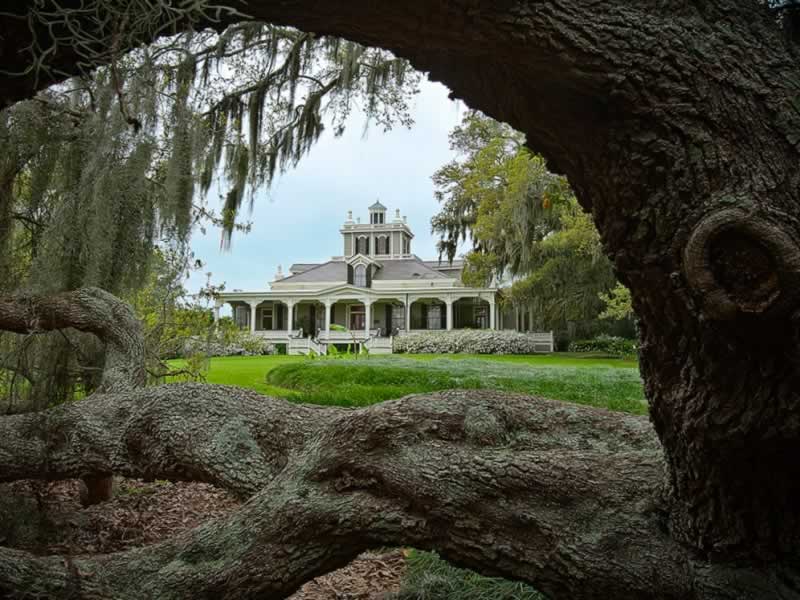 Joseph Jefferson Mansion at Jefferson Island, Louisiana (Photo courtesy of the LA Office of Tourism) |
Leaving New Iberia, journey on Louisiana Highway 31 to St. Martinville ...
St. Martinville
St. Martinville is located in extreme south Louisiana, in the heart of Cajun Country and Acadiana, and situated roughly between New Iberia and Lafayette. It is the parish seat of St. Martin Parish and has a population of about 5,000 residents.
It is located on the banks of the historic Bayou Teche The word "Teche" means snake in American Indian language. This beautiful bayou winds through the heart of St. Martinville.
Nearby towns include Breaux Bridge, Henderson, New Iberia, Butte La Rose, Cade, Delcambre, Delacroix, and Loreauville.
Acadian Memorial
St. Martinville is home to the Acadian Memorial which honorsthe 3,000 Acadian men, women and children who found refuge in Louisiana after British forces exiled them from Acadie.
Among the attractions is the stunning mural entitled "The Arrival of the Acadians in Louisiana" by Robert Dafford. The mural, measures 12 x 30 feet, and its figures represent actual documented Acadian refugees who arrived in Louisiana from about 1764 to 1788 and who settled in different parts of the state. Some models are direct descendants of the figures they portray.
Other facets of the Acadian Memorial include The Wall of Names, The Eternal Flame, The Deportation Cross, the Acadian Odyssey Quilt and much more.
The memorial is located 121 S New Market Street. Phone 337.394.2258
Read more at the website of the Acadian Memorial
The "Arrival of the Acadians in Louisiana" mural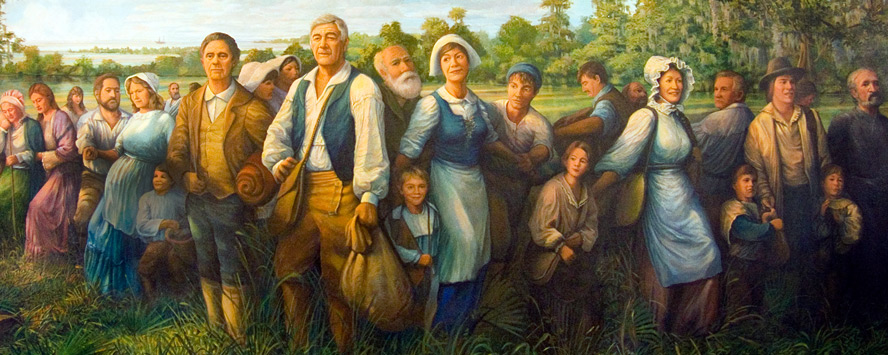 |
St. Martin de Tours Catholic Church
A "must see" attraction in St. Martinville is the historic St. Martin de Tours Catholic Church, one of the oldest Catholic churches in America and the third oldest in Louisiana. It has been the center of religious and cultural activities of St. Martinville and the Attakapas Nation since colonial days.
The Catholic Faith was first brought to the area of south Louisiana which would be designated as the Attakapas Post by missionary Priests from Pointe Coupee who ministered to those who had settled along Bayou Teche. The first recorded rituals were on June 5, 1756 by Fr. Pierre Didier, OSB, a missionary Benedictine Priest from Pointe Coupée who also served the Post at Natchitoches.
By 1765, the Parish was formally established when a group of Acadian exiles arrived in mid May of that year. The current church structure, although enlarged and renovated over the centuries, was built in 1836.
In front of the church stands a statue of Fr. Ange Marie Jan, an early pastor who served from 1851-1887. In 1874, he added the transcepts to the church where the Grotto of Lourdes and the Sacred Heart Altar are located and extended the sancturary to its present size, giving the church its current cruciform shape.
A visit to the church and its grounds are highly recommended! It is located at 133 South Main Street in St. Martinville.
Read more at the website of the St. Martin de Tours Catholic Church
| Scenes from St. Martin de Tours Catholic Church |
|
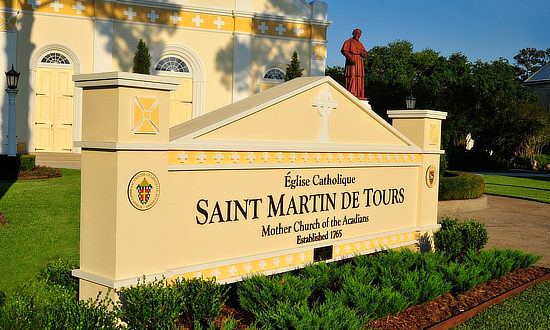 |
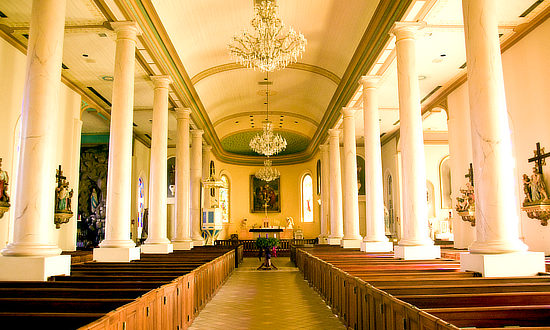 |
Evangeline Oak
Another top attraction in St. Martinville for visitors is the historic Evangeline Oak. Longfellow's poem "Evangeline" immortalized the tragedy of the Acadian exile from Nova Scotia in 1755. The giant oak marks the legendary meeting place of Emmeline Labiche and Louis Arceneaux, the counterparts of Evangeline and Gabriel.
It is located in Evangeline Oak Park, on Bayou Teche, at the end of Evangeline Boulevard.
As you leave St. Martinville, take Highway 96 west to U.S. 90 and into Lafayette ...
Lafayette
Lafayette is located in the heart of Cajun Country and Acadiana, on the banks of the Vermilion River, at the junction of Interstate Highways I-10 and I-49. The city is situated midway between Houston and New Orleans, and 35 miles from the Gulf of Mexico.
The first settlers were French Acadians ("Cajuns") who came to the area in the 1700s. Originally founded in 1821 as Vermilionville, the settlement was renamed Lafayette in 1884.
It is not a "small town" but a medium-sized city, with multiple Acadian attractions, a jetport, fine restaurants and many lodging options.
Vermilionville
A "must see" Lafayette attraction is called "Vermilionville" which recreates the Cajun lifestyle and folklore in a series of restored buildings. Vermilionville Living History Museum’s mission is to increase appreciation for the history, culture, and natural resources of the Native Americans, Acadians, Creoles, and peoples of African descent in the Attakapas region through the end of the 1800s.
Through historic interpretation and conservation along the Bayou Vermilion, guests are educated on the interactions of these groups and the connections between past and contemporary folklife.
Vermilionville is located at 300 Fisher Road, in the heart of Lafayette, across from the Lafayette Regional Airport off of Surrey Street.
Vermilionville in Lafayette, Louisiana ... A Cajun/Creole Heritage and Folklife Park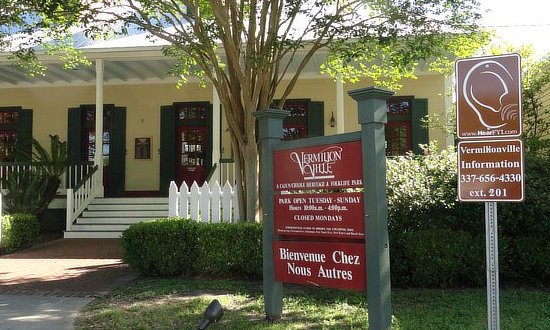 |
Acadian Cultural Center
The Acadian Cultural Center in Lafayette is operated by the National Park Service (NPS). The center provides permanent and special exhibits, an award-winning film, ranger talks, and programs that share the history, customs, language, and contemporary culture of the Acadians who became Louisiana's Cajuns.
Who are the Acadians and how did they become Louisiana's Cajuns? Find out through a film that shares their history from their deportation from Nova Scotia in Canada to their settlement in south Louisiana.
Admission to the center and to most programs is free. It is located at 501 Fisher Road in Lafayette.
Acadian Village
Located at 200 Greenleaf Drive in Lafayette, Acadian Village features a number of restored area homes, a blacksmith shop, general store and chapel. It also serves as an event center for special events.
Scene at Acadian Village in Lafayette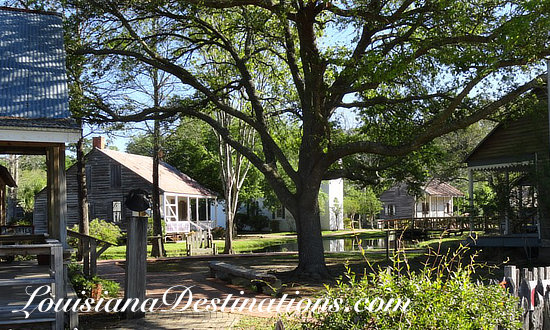 |
It is only a short drive from Lafayette to Breaux Bridge, on Louisiana Highway 94 ...
Breaux Bridge
In the heart of Cajun Country and Acadiana is the community of Breaux Bridge.
Breaux Bridge is located just east of Lafayette on I-10 at Exit 109 (Highway 328), and close to Henderson, the gateway to the great Atchafalaya Basin Swamp.
In 1959, the Louisiana Legislature designated Breaux Bridge as "the Crawfish Capital of the World".
Breaux Bridge Crawfish Festival
Breaux Bridge, situated on the banks of historic Bayou Teche, is the site of the world famous Breaux Bridge Crawfish Festival held in Parc Hardy.
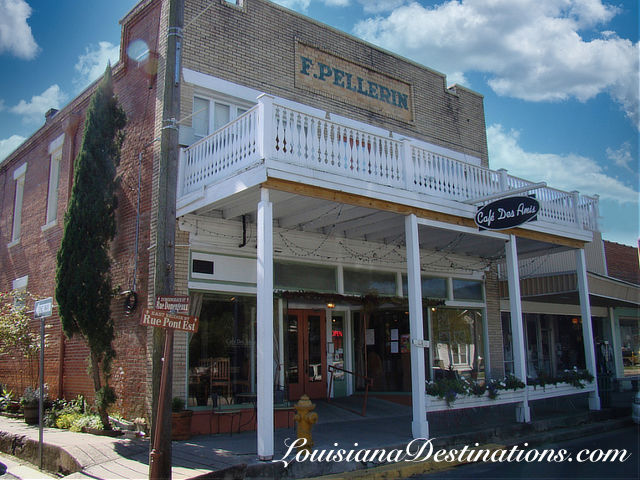 Downtown scene, Breaux Bridge (Staff Photo) Downtown scene, Breaux Bridge (Staff Photo) |
Where else in the world but in Louisiana would you find a 3-day celebration totally devoted to Crawfish? Every year on the first full weekend in May, thousands congregate in Breaux Bridge to pay tribute to the little crustacean we all know and love.
Breaux Bridge Cuisine and Restaurants
Breaux Bridge is known for its Cajun and Creole culture, and its legendary Cajun cooking and crawfish. Excellent Cajun cooking abounds in Breaux Bridge, whether your tastes tend to Seafood Gumbo, Crawfish Etouffee, Crawfish Bisque, Crawfish Pie, Fried Crawfish, Boudin or maybe even Fried Alligator!
Here are located a number of popular restaurants such as Cafe Sydnie Mae, Poche Market & Restaurant, Crawfish Town USA, Chez Jacqueline Restaurant, Crazy Bout Crawfish Cajun Cafe, Le Cafe and others.
Swamp Tours in the Breaux Bridge Area
One of the most popular things to do in Louisiana is touring the swamps! Most tours are concentrated in South Louisiana.
The area between Lafayette and Baton Rouge offers a number of swamp tours, operating from communities such as Breaux Bridge, Henderson, St. Martinvile and Plaquemine.
Learn more about Swamp Tours in the Atchafalaya Basin.
After visiting Breaux Bridge, take Highway 347 east and onto Interstate I-10 east ...
The Atchafalaya Visitors Center
The Atchafalaya Welcome Center is located on I-10 just east of Breaux Bridge and Henderson, "smack dab in the middle” of the Atchafalaya Basin.It is located at the Butte La Rose Exit 121, between the Henderson exit (115) and the Whiskey Bay exit (127).
It’s part rest area, part information center and part Atchafalaya Basin classroom. Plus they serve complimentary Community Coffee! State-of-the-art video, audio and animatronic displays teach visitors about the Atchafalaya, its history and the culture it influences.
There are three main exhibit areas in the center that portray the Basin throughout the year: high water, low water and mid-water seasons. Each area is filled with pictures, stories, dioramas and sculptures depicting life in the Basin during that season. Oversized “frames” feature slideshows that offer visitors several glimpses of the Basin’s people, wildlife, waterways and flora.
|
Continue east on I-10 after the Visitor Center, and then take Exit 135 off I-10 at Ramah, and head north on Louisiana Highways 3000 and 76 through Marigouin to Livonia, and then Highway 78 and Highway 1 into New Roads ...
New Roads
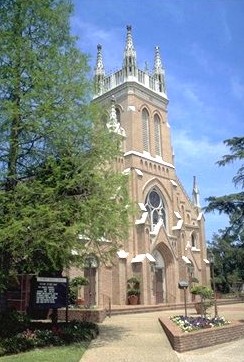 St. Mary's Catholic Church, New Roads (Courtesy of the Louisiana Office of Tourism) |
New Roads is located on along False River on Louisiana Highway 1 about 30 miles northwest of downtown Baton Rouge, and is the parish seat of Pointe Coupee Parish. Several inns and B&Bs are located in the New Roads area.
Le Poste de Pointe Coupée (“The Pointe Coupee Post”) is one of the oldest communities in the Mississippi Valley, founded in the 1720s by settlers from France.
The town is named after a “new road” the Spanish built in 1776 between the Mississippi and the False River, northwest from Baton Rouge.
Pointe Coupee Parish is surrounded by three major rivers: the Mississippi on the east, the Atchafalaya River on the west, and the mouth of the Red River on the north. False River is also in the parish. Old River is a 12-mile long oxbow lake located in northern Pointe Coupee Parish and western West Feliciana Parish.
Continue on your road trip by taking La Highway 10 and crossing the Mississippi River on the John James Audubon Bridge. Once on the east bank of the river, take U.S. Highway 61 just a bit north to St. Francisville ...
St. Francisville
The St. Francisville area is rich in history, having been settled in 1807 on the bluffs above the banks of the Mississippi River in West Feliciana Parish. The historic town is situated just north of Baton Rouge on U.S. Highway 61, the Great River Road.
St. Francisville is known for its uniqueness and slower pace of living. Nestled in the hills of West Feliciana Parish, the topography, abundant wildlife, and natural beauty makes this a fabulous destination for outdoor exploration.
St. Francisville and the surrounding countrysides offer a number of beautiful churches, exciting shopping venues, award winning restaurant, and historic home tours. It also maintains a popular main street historic district with antique shops, art galleries, and cafes and restaurants. Just south of St. Francisville is the Port Hudson State Historic Site and its miles of trails through rugged wooded terrain.
Continue on your road trip via U.S. Highway 61 south from St. Francisville to Baton Rouge ...
Baton Rouge
Baton Rouge is NOT a small town, but a major city with the area having a population of over half a million residents. But ... you might want to visit ..
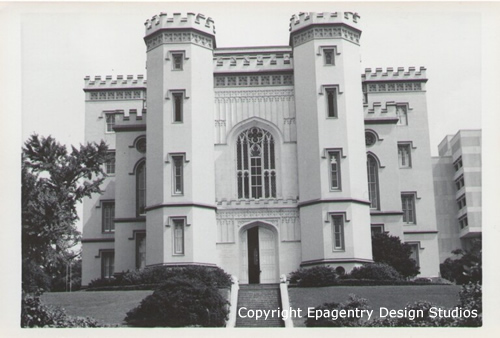 The "Old" State Capitol on North Boulevard at the Mississippi River, downtown Baton Rouge, Louisiana (Staff Photo) |
The "Old" Louisiana State Capitol
On September 21, 1847, the City of Baton Rouge donated to the state of Louisiana a $20,000 parcel of land for a state capitol building, taking the seat of the capitol away from the City of New Orleans. The land donated by the city for the new capitol stands high atop a Baton Rouge bluff facing the Mississippi River, at the foot of North Boulevard.
Construction took place between 1847 and 1852.
The building is one of the most distinguished examples of Gothic Revival architecture in the United States.
A National Historic Landmark, the building was restored in the 1990s and now houses the Museum of Political History.
Read more about the Old State Capitol
The "New" Louisiana State Capitol Building
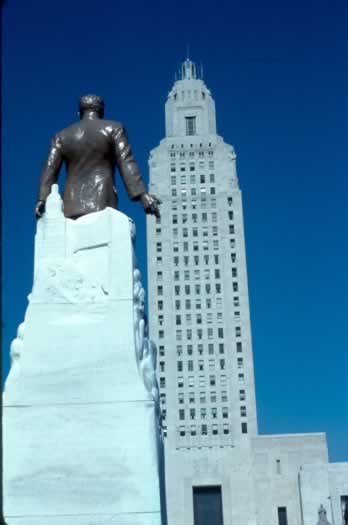 The Huey Long monument and tomb on the State Capitol grounds in Baton Rouge (photo by the Louisiana Destinations staff) |
Governor and U.S. Senator Huey Pierce Long had a vision of a new, towering Louisiana State Capitol building.
The Yazoo and Mississippi Valley Railroad company built a rail spur to the construction site. Approximately 2,500 rail cars of materials were brought via this rail spur for use on the capitol.
On May 16, 1932, after only 14 months of construction, the new building was dedicated to the citizens of Louisiana.
Ironically, Huey P. Long was unable to attend because of pressing senatorial duties in Washington D.C.
On September 8, 1935, Long, then a U.S. Senator, was fatally wounded by an assassin in the Capitol building, where the bullet holes are still to be seen on the wall.
He died two days later as a result of his wounds and is interred in the Capitol gardens.
As the tallest state capitol in the United States, the building is 450 feet high with 34 floors. The cost to complete the building was a modest $5 million.
It is one of only four skyscraper capitols in the country and one of only nine capitol buildings that does not have a dome.
Leaving Baton Rouge, cross the Mississippi River on the I-10 bridge, and exit on Highway 1 South ... continue through Brusy, Plaquemine, White Castle, to Donaldsonville, then on 3137 and 18 to Vacherie ...Learn more about the Louisiana State Capitol building
Vacherie
Vacherie is a small settlement in St. James Parish, located on the west bank of the Mississippi River exactly halfway between Baton Rouge and New Orleans. Vacherie is one of the many places in Louisiana founded on Creole culture – a mix of Influences from the French, Spanish, West Africans, and Native Americans combined.
At Laura Plantation, Louisiana’s Créole Heritage Site, visitors can walk in the footsteps of four generations of one Louisiana Creole family, both free and enslaved, and hear intimate, first-hand accounts from those who resided there.
Also in Vacherie is one of the South’s most spectacular settings: Oak Alley Plantation. Built in 1839, the front landscape features a quarter-mile-long alley of 28 magnificent 250 year-old oak trees, running from near the Mississippi River to the house.
Vacherie has multiple locations on South Louisiana’s Andouille Trail, including Spuddy’s Cajun Foods, which offers hands-on Cajun cooking classes.
Leaving Vacherie, take Highway 3137 to its intersection with I-310, cross the Mississippi River on the Luling Bridge, and continue on I-10 back into New Orleans ...
New Orleans
We're back! It was quite a trip!
| Louisiana Travel Information | ||
 |
 |
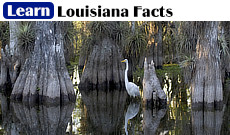 |
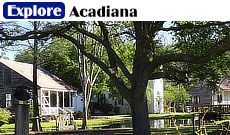 |
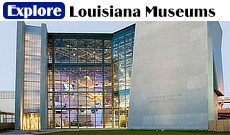 |
 |
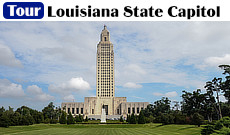 |
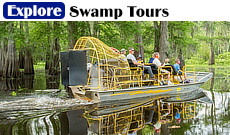 |
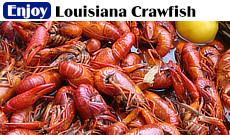 |
